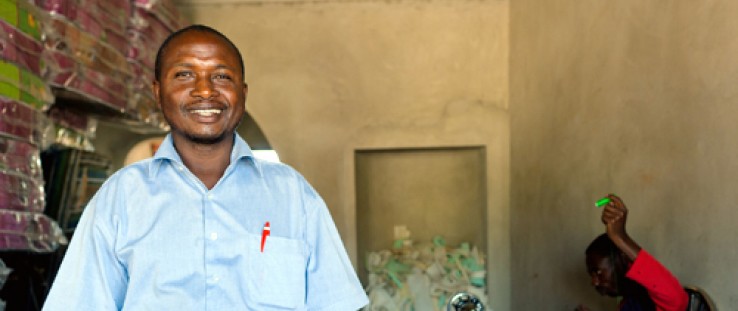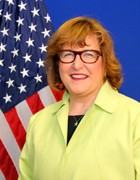 Morgana Wingard
Morgana Wingard
 Morgana Wingard
Morgana Wingard
In the five decades since President John F. Kennedy asked Congress to create the U.S. Agency for International Development, the development landscape has changed tremendously. One of the most powerful changes is the growing role of the private sector.
The statistics speak for themselves: official development assistance has gone from being 70 percent of resource flows to the developing world in the 1960s to less than 13 percent today. Private sources of capital—from remittances and foreign direct investment to foundation grant-making—have outpaced official development assistance. This shift is transforming not only how development is funded, but how it is being done.
To be effective, development agencies must adapt to this trend and take steps to make private-sector partnerships a key part of their work. Crafting effective public-private partnerships is no longer a luxury, but a necessity.
As USAID Administrator Rajiv Shah has said, “if we are going to encourage truly sustainable, broad-based economic growth in developing countries, we have to do a far better job of working with private firms—be they domestic or foreign, established or entrepreneurial.”
USAID recognized this need early on. In 2001, the Agency established the Global Development Alliance program and pioneered a structured approach to public-private development partnerships. With over 1,000 partnerships under its belt, USAID is recognized as a global leader by its peers in the development donor community as well as by private sector organizations. We are proud of this legacy but we know there is still work that needs to be done if we are going to seize the full potential impact these partnerships can have in international development.
Strategy not Philanthropy
How the business community thinks about development is evolving. As experts like Jane Nelson at Harvard’s Kennedy School of Government and Michael Porter at the Harvard Business School point out, successful businesses increasingly consider development as a core strategy issue rather a matter of corporate philanthropy.
At a forum USAID hosted in December, three Fortune 500 business leaders—Cargill CEO Greg Page, Walter Bell of Swiss Re, and former Merck Chairman and CEO Richard Clark—agreed that development was a core business issue for them. Companies and business leaders like these have a stake in development for a range of reasons such as broadening their access to markets and creating secure, stable, and sustainable supply chains. And what the development community provides is a combination of deep technical expertise, ground knowledge, access, and credibility.
For example, in one recent partnership, USAID is partnering with PepsiCo to help smallholder chickpea farmers increase their yield, which PepsiCo will turn into a high-energy paste that will be used by the World Food Program as well as sold commercially by Pepsi. This partnership is about addressing overlapping interests and leveraging expertise that are core to each of our organizations.
As the business world changes how it thinks about integrating development into its strategies, those of us in the development community also need to adapt how we think about integrating the business world into our strategies.
As Administrator Shah has said, “We must partner with the private sector much more deeply from the start, instead of treating companies as just another funding source for our development work.”
Yes, partnering with business can mean bringing more money to bear on a challenge. But partnering with business can also unlock access to resources like technical expertise and distribution systems that can help improve and sustain development impact. Through programs like the Global Development Alliance, USAID has proven that it has a systematic, replicable process for working with the private sector and establishing effective, mutually beneficial partnerships.
Planning for Partnership
What we must increasingly focus on is engaging business and integrating partnerships as a core part of our work. This is why USAID is taking steps to include public-private partnerships in our country strategy processes; revitalize and revamp partnership training; and create and increase access to tools and resources for staff across the Agency working on partnerships. And the Agency is establishing—through a partnership—an online community which we hope will serve the broad range of stakeholders with an investment in public-private partnerships for development.
These steps, which are aimed at increasing the Agency’s overall capacity to effectively partner with the private sector, are in addition to our efforts to actually establish new, pioneering partnerships.
Public-private partnerships have proven to be key components in delivering on strategic planning defined in the Quadrennial Diplomacy and Development Review and the Presidential Policy Directive on Global Development, which states: “USAID will work in collaboration with other agencies to formulate country development cooperation strategies that are results-oriented, and will partner with host countries to focus investment in key areas that shape countries’ overall stability and prosperity.”
Missions are elevating the collaborative approaches used to identify and deliver on local development priorities; and incorporating public-private partnerships has been a key component in delivering high-impact, strategic alliances that can address both the Agency’s development objectives and the core business interests of our private sector partners.
USAID is the global standard-bearer for public-private partnerships. The Agency provides the expertise and access for businesses to invest in emerging markets, and assists in identifying interventions that are both beneficial for business' bottom line and work towards the Agency’s development goals.
Through models such as public-private partnerships, development interventions that USAID invests in will not require long-term support but will be sustained by private-sector-led growth in developing communities. Short-term humanitarian needs can often be addressed through charity; long-term, sustainable advances in development cannot rely on charity alone. The future of development relies on governments working with NGOs, corporations and local businesses, foundations, and other private-sector entities to develop and elevate interventions that are sustained beyond charitable intervention.










Comment
Make a general inquiry or suggest an improvement.